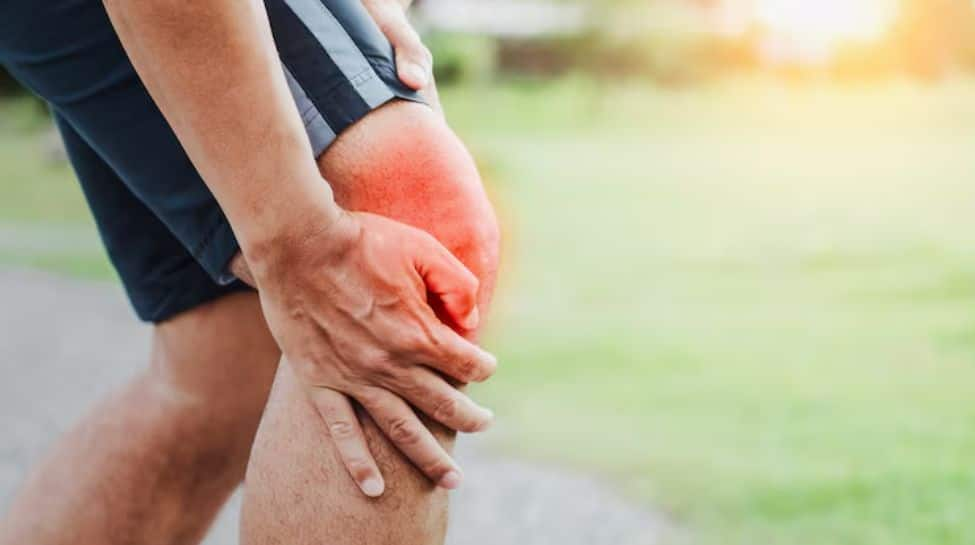With winter, smog arrives, and the sky turns grey. Many people expect sore eyes and a dry cough, and what is surprising is the return of joint pain. Clinics across northern India are reporting a clear pattern: more and more patients are arriving with swollen, stiff knees, painful wrists, or aching backs. According to the Indian Rheumatology Association, high levels of PM2.5 particles in the air are now being recognized as a significant trigger for inflammation and arthritis.
The toxic air, consisting of nitrogen dioxide and sulfur dioxide, can slip past the lungs into the bloodstream, compromising the body’s immune system by releasing cytokines, increasing oxidative stress in tissues, including those around joints. For people who already have arthritis, this extra inflammation makes joints hotter, stiffer, and more painful. Even those who never had joint trouble may feel morning aches that linger longer than usual.
Dr. Simon Thomas Senior Director Robotic Joint replacements and Orthopedics at Max Super Speciality hospital shares why your joints ache more during pollution season and further sharing what can be done about it.
Why Symptoms Worsen in Polluted Air
Inflammatory pathways are enhanced during these months due to long-term exposure to dirty air. Research indicates that particulate matter is capable of inducing the same biochemical reactions known to trigger the flares of arthritis. When inflammation increases, the production of synovial fluid can be compromised, resulting in stiff or dry joints. Individuals who are already dealing with osteoarthritis or rheumatoid arthritis tend to feel worsening pain during periods of high pollution, particularly when mornings are chilly and there is poor air circulation.
The weather changes and poor air quality further increase stress on the tissues, while a reduction in temperature and humidity negatively affects tissue softness and flexibility, thereby contributing to greater stiffness. This combined mechanical response from the weather creates more strain on already possibly affected joints, all the while receiving poisoned air. The ones who often suffer the most are those who have been working long hours outside or the recipients of continuous long commutes through traffic.
Simple Habits to Reduce the Impact
The good thing is, simple daily habits can lower the inflammatory burden. Try to remain indoors during early morning and late evening peaks of pollution, and install a certified air purifier inside the house to cut indoor particle levels. Make sure to drink two liters of water throughout the day, as your body requires adequate hydration to lubricate joints and allow the kidneys to clear inflammatory metabolites. Replace your sugary beverage with antioxidant-rich green tea, fresh ginger infusion, or warm turmeric water to supply additional anti-inflammatory polyphenols.
Eat for Joint Protection
A diet that emphasizes cutting down oxidative stress can make a big difference. Adding omega‑3 fatty acids from fish, flaxseeds, or walnuts reduces inflammatory markers. Fresh fruits, greens, and foods rich in vitamin C fortify connective tissues and enhance circulation. Meanwhile, deep-fried foods, refined carbs, and too much caffeine increase inflammation and should be minimized during heavy pollution months.
Stay Active and Support Recovery At Home
Exercise continues to be a daily necessity, even when the air quality outdoors is poor. In such weather, the challenge is how to stay active. Doing stretching, low-impact strength training, or gentle yoga indoors can keep the joints loose and supple and avoid stiffness. Regularly exercising keeps the blood flow going, and the nutrients can also travel to the ligaments and cartilage more easily. Make sure to move inside on high-pollution days, as heavy breathing outdoors can cause particulate uptake.
At home, simple comfort measures can further ease discomfort. Applying warm compresses in the evening relaxes tense muscles and relieves stiffness. Baths with Epsom salt or gentle steam treatments improve circulation and support recovery. Adequate sleep plays an equally critical role, as rest helps regulate inflammatory hormones and allows tissues to repair naturally.
When to Seek Medical Advice
Medical providers should conduct once-yearly check‑ups on people with arthritis or chronic respiratory illness. Monitoring inflammatory markers in these patients to identify the initial warning signs of systemic stress due to pollution. This way, the patient can modify their treatment when their doctor recommends it, to stop the flare from worsening and to maintain joint function.
Breathing Easier for Your Joints
In many cities, residents face hazardous air quality levels for several hours each day, with PM2.5 and smog concentrations often exceeding safe limits set by the World Health Organization. Air pollution affects the long‑term health of our lungs and joints, and their protection is closely related. It is possible to navigate pollution season with less discomfort and increased resilience by practicing mindful eating, moving regularly, and breathing cleaner indoor air.
(This article is meant for informational purposes only and must not be considered a substitute for advice provided by qualified medical professionals. Always seek the advice of your doctor with any questions about a medical condition.)

